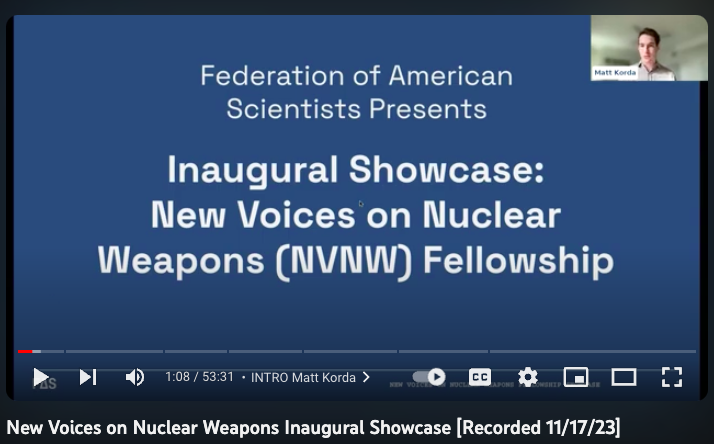A Reflection on the 2023 Hiroshima ICAN Academy
The views expressed herein belong solely to the author and do not necessarily reflect those of the U.S. Government.
As I stood outside of the Hiroshima Prefectural Industrial Promotion Hall, now memorialized as the Atomic Bomb Dome, I was amazed by the profound stillness of the park even though it sat in the shadow of the city’s tall buildings beside busy streets filled with cars and pedestrians.
I glanced at an image on my phone of the area taken several days after the bomb dropped. The Atomic Bomb Dome stood defiantly amidst the wasteland of flattened buildings and burnt rubble. Now, it stood beside large green trees and towering apartment buildings in the gaze of a large athletic stadium. I had learned that the river beside me, now full of boats bringing tourists to the nearby Miyajima Island, was once filled with bodies of people who sought a brief relief for their burning flesh. I tried to imagine how this peaceful and modernized city looked in 1945, but visualizing such horror was beyond my imagination.
Without intentionally traveling to the Peace Park in Hiroshima, one could almost entirely overlook the city’s tragic history. Amidst the modern stores, apartment buildings, and restaurants, several buildings that survived the atomic bomb blast have been preserved, bearing the heavy weight of Hiroshima’s legacy. They remember the flattened buildings, waves of fire, black rain, and harrowing human cries for water.
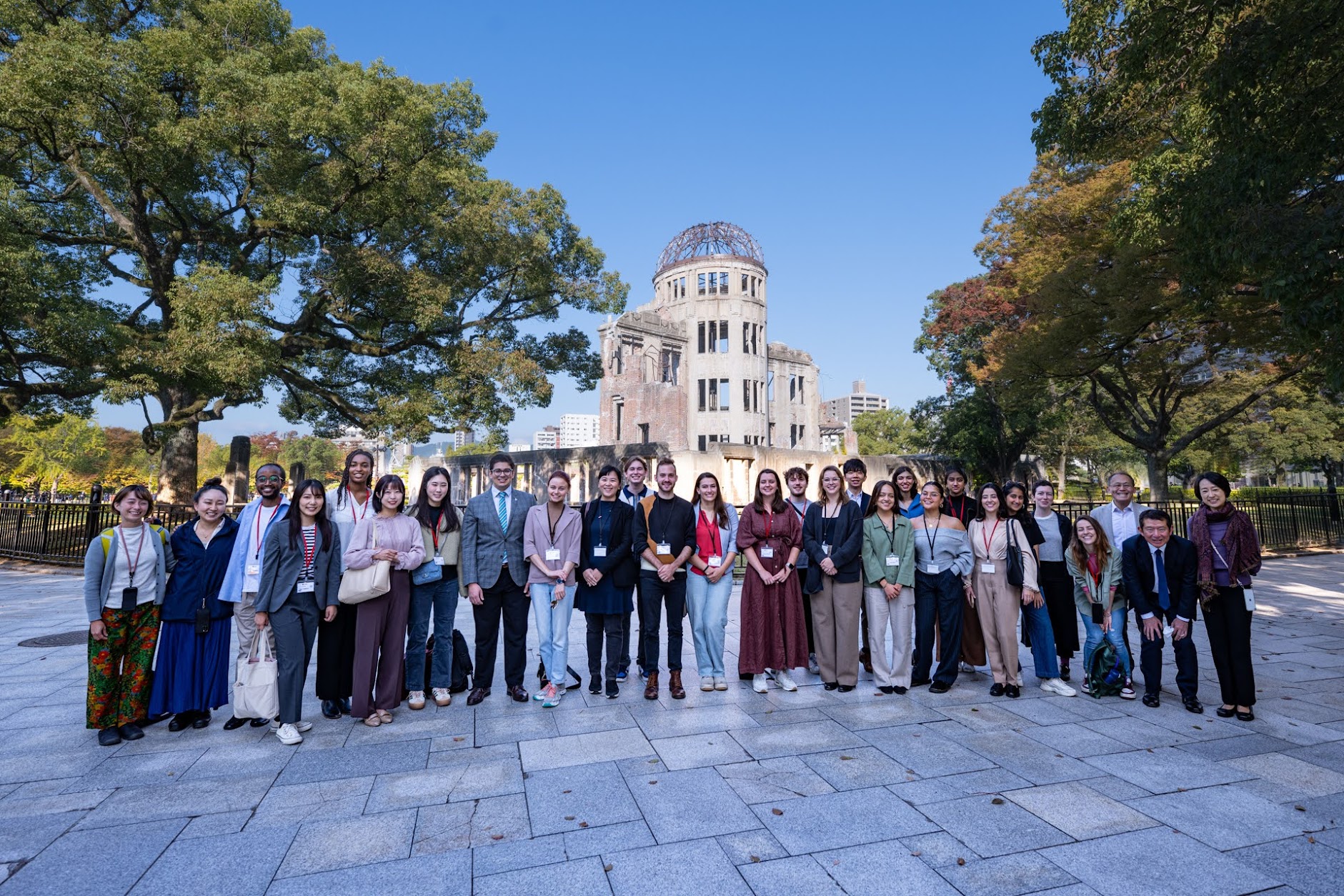
The New Voices on Nuclear Weapons Fellowship at the Federation of American Scientists helped me enter the field with no prior knowledge of nuclear weapons, let alone deterrence theory and the history of nuclear proliferation. I can confidently say that without this fellowship opportunity, I would not have thought I could have the authority to speak about nuclear weapons.
Many conversations and debates about nuclear weapons are rooted in complicated theories and hypothetical scenarios, making it difficult to join the discussion. While I believe it’s challenging for any human brain to fully internalize nuclear weapons’ lethal capacity, we can comprehend how nuclear weapons surpass the threats posed by other forms of warfare in terms of their destructive and indiscriminate potential.
I applied to the 2023 Hiroshima-ICAN Academy on Nuclear Weapons and Global Security to conceptualize the true destructive power of a nuclear weapon. Prior to the academy, I believed indisputable international norms prevented government officials from accepting disarmament and abolition as plausible nuclear policy guidelines. In speaking with hibakusha and many young activists in Japan, my preconceived notion was challenged; I learned that the propensity to dismiss the feasibility of nuclear abolition is not innate. Those who have experienced the apocalyptic repercussions of a nuclear weapon not only endorse the necessity of abolition but themselves underscore that the pursuit of disarmament is not just a policy objective but a moral responsibility—one that demands collective action and a commitment to preventing future generations from experiencing the unspeakable tragedies of the past.
The 2023 Hiroshima-ICAN Academy on Nuclear Weapons and Global Security is organized by Hiroshima Prefecture and the International Campaign to Abolish Nuclear Weapons (ICAN), the 2017 Nobel Peace Prize laureate. The goal of the program is to educate young leaders who can make concrete contributions toward a more peaceful and secure world. In addition to several peers from the United States, I joined other participants from China, Italy, India, Kenya, Lebanon, Ukraine, and more.
The 2023 Hiroshima-ICAN Academy hosted several online lectures and four days of educational sessions in Hiroshima, Japan. Online webinars gave participants the opportunity to interact with famous activists, such as Koko Kondo, Mary Dickson, and Melissa Parke, and hear from esteemed professionals in the nuclear field like Dr. Vincent Intondi and Izumi Nakamitsu. We learned about the suffering of downwinders in the United States, ICAN’s initiatives towards abolition, the UN’s disarmament efforts, and the racial history of nuclear weapons testing and usage. Prior to the online portion of the academy, I knew nothing of the intersectionality of nuclear weapons threats.
While in Hiroshima, we had a busy week of meetings, lectures, and tours, including a guided tour of the Peace Park and meetings with Hiroshima Mayor Kazumi Matsui, Hiroshima Governor Hidehiko Yuzaki, and atomic bomb survivor Keiko Ogura. Together, we learned about Hiroshima nonprofit efforts to support atomic bomb survivors, discussed the ecological effects and colonial history of nuclear weapons testing, and planned how to effectively interject discussions about disarmament in our respective communities.
The most memorable part of the ICAN Academy for me was speaking with atomic bomb survivors, also known as hibakusha. I was fortunate to spend several hours with hibakusha Ms. Sadae Kasaoka, who was 12 years old when the atomic bomb dropped. Ms. Kasaoka urged all of the Hiroshima ICAN participants to share her story with our communities.

I was struck by Ms. Kasaoka’s bravery and resilience. No human wants to dwell on the most traumatic experience of their lives, let alone recount it for hundreds of listeners each year. However, Ms. Kasaoka has been doing so year after year for the benefit of our education.
Like many children in Japan during World War II, Ms. Kasaoka would help demolish wooden houses to prevent the spread of fire after air raids. Her life consisted of work, rushing to bomb shelters, and fearing for her family. On the morning of August 6, 1945, Ms. Kasaoka was in her home when the atomic bomb was dropped. Ms. Kasaoka saw a blast of light through the window of her home and was knocked down by the initial blast of the bomb. Hours later, the images she would see in her town would be seared into her memory forever.
During our conversation with Ms. Kasaoka, she recounted the destruction of her friends’ homes and vividly remembered watching humans walk up the mountain, skin hanging off of their bodies like ghosts. When her father was brought back to the house on a stretcher several hours later, she did not recognize him because his face had significantly swelled and his skin was burnt black. She would spend the next two days applying cucumbers and potatoes to his skin to cool the burning while picking maggots out of her father’s flesh as he pleaded with her for water. Later, she would be brought a bag of ashes and hair, allegedly belonging to her mother. The atomic bomb would leave Sadae Kasaoka an orphan like thousands of young Japanese children in Hiroshima and Nagasaki. In Ms. Kasaoka’s words, “This is the reality of war.” Her story is only one of hundreds of thousands.
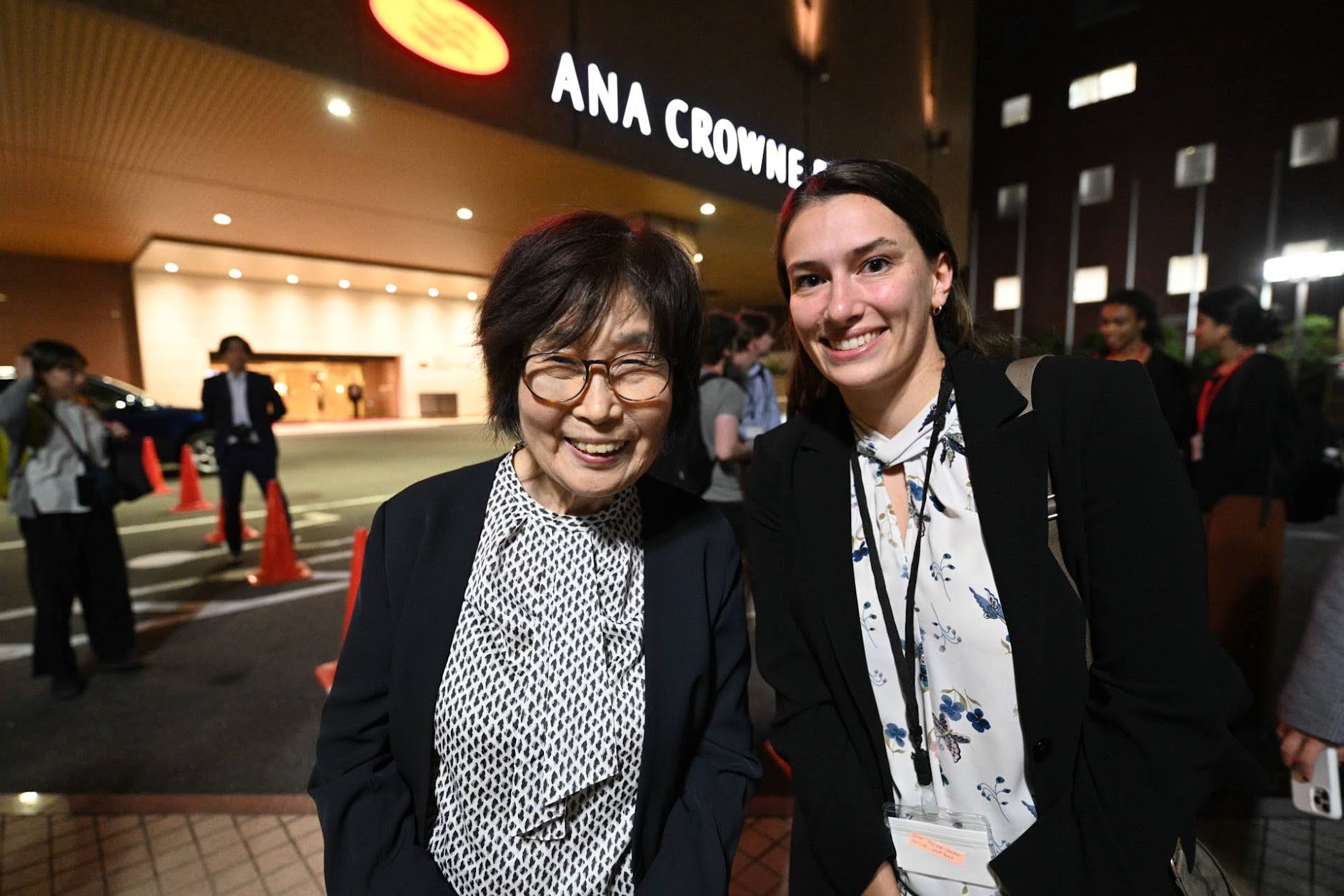
Prior to my fellowship with FAS, like many young Americans, I believed that nuclear weapons were a rusting relic of the past. At the end of my fellowship, I recognize these weapons are being cleaned and shined as arsenals expand and the risk of nuclear weapons use grows to be higher than at any time since the Cold War. Both FAS and the ICAN Academy led to my realization of a sobering truth: nuclear weapons cannot coexist with mankind indefinitely.
The Federation of American Scientists values diversity of thought and believes that a range of perspectives — informed by evidence — is essential for discourse on scientific and societal issues. Contributors allow us to foster a broader and more inclusive conversation. We encourage constructive discussion around the topics we care about.
New Voices on Nuclear Weapons Fellowship: Creative Perspectives on Rethinking Nuclear Deterrence
After decades of reductions in the number and salience of nuclear weapons, they are once again at the center of international security. All nine nuclear-armed states are updating their arsenals, and several are expanding them. But despite new military technology and new risks, the concepts underpinning nuclear deterrence have changed little since the height of the Cold War. It is more important than ever that the nuclear policy community recruit new voices from diverse demographic and socioeconomic backgrounds to bring new perspectives, skills, and ideas into the field.
To empower new voices to start their career in nuclear weapons studies, the Federation of American Scientists launched the New Voices on Nuclear Weapons Fellowship. Between May and August 2023, each of our inaugural fellows–Anna Pluff, Clara Sherwood, Cameron Vega, and Charlotte Yeung–was paired with a senior academic or policy expert (John Emery, Jamie Withorne, Alan Robock, and Lovely Umayam) to co-author a research project that provides a creative perspective on nuclear deterrence policy.
As a culmination of this year’s fellowship, FAS hosted a showcase featuring presentations by fellows on their research following a Q&A session, as well as remarks by FAS staff on the fellowship’s structure, goals, and role in empowering the next generation of nuclear policy experts. A recording of the showcase is available for viewing below.
Fellowship Showcase
Fellowship Projects and Publications
New Voices on Nuclear Weapons fellows have had their research projects published across a variety of mediums. Please see below the fellows’ project summaries and publications related to this fellowship to date; this list will be updated as their research continues to be finalized.
Anna Pluff
In the early years of the Cold War, many scientists from the Manhattan Project fervently believed in the idea of “One World or None” and promoted nuclear one worldism. Though the scientific profession had relatively little experience with public engagement before the 1940s, scientists banded together to stretch the political possibilities of professional modes of association to foster support for world government. Anna’s case study looks at the historic role that scientific activism played in nuclear policy through one-worldism and how scientific activism can become a viable force in rethinking deterrence today.
Publications
- “Failed visionaries: Scientific activism and the Cold War” The Bulletin of the Atomic Scientists.
- “What “Oppenheimer” Misses About The Decision to Drop the Bomb” Inkstick Media.
- “Manhattan Project Scientists Believed the Way We Get Out Alive is World Government” Inkstick Media.
Clara Sherwood
Targeted disinformation and rapid digital communication are complicating nuclear deterrence and crisis management in an unprecedented manner. While nuclear discussions have traditionally occurred privately between governments, in the 21st century, there are a myriad of different actors participating in global nuclear conversations. Clara’s research aims to describe how digital narratives from non-governmental actors are contributing to escalation management, nuclear discourse, and nuclear rhetoric in the context of the Russian-Ukrainian War.
Publications
- “Exiting Musk’s Twitter Has Compromised Nuclear Communication Channels” Inkstick Media.
- “How nongovernmental entities are tailoring their outreach to address nuclear escalation” The Bulletin of the Atomic Scientists.
Cameron Vega
American nuclear deterrence inherently relies on ethical principles dictating the appropriate use of nuclear weapons; however, these ethical principles insufficiently consider modern scientific modeling demonstrating the devastating climatic impacts of nuclear use. Cameron’s research aims to update the ethical principles underpinning American nuclear deterrence to account for the realities of how nuclear strikes would affect the local environment and global climate change.
Publications
- “The climate blind spot in nuclear weapons policy” The Bulletin of the Atomic Scientists.
Charlotte Yeung
The nuclear narratives told and believed today are rooted in how nuclear weapons are discussed in schools, culture, and locality. The branching narratives in America and Japan are particularly distinct and told through different forms of official narratives taught in textbooks, visual aesthetics, preservation of nuclear-related sites, movements, and the military-industrial complex. Charlotte’s exhibit and poetry ask how education and culture are the roots through which come the multidimensional nature of how Americans and Japanese learn about nuclear weapons and how those define the systems that shape public opinion about nuclear weapons today in those two countries.
Publications
- Culture Blast: Tracing Nuclear Narratives (Online Research Project Website)
- “Culture Blast At The Kurt Vonnegut Museum” Federation of American Scientists
Culture Blast at the Kurt Vonnegut Museum
Charlotte Yeung is a Purdue student and New Voices in Nuclear Weapons fellow at FAS. Her multimedia show, Culture Blast, opens this week at the Kurt Vonnegut Museum in Indianapolis.
Best known for his anti-war novel Slaughterhouse-Five (1969), Kurt Vonnegut’s experience serving in World War II informed his work and his life. He acted as a powerful spokesman for the preservation of our Constitutional freedoms, for nuclear arms control, and for the protection of the earth’s fragile biosphere throughout the 1980s and 1990s. He remained engaged in these issues throughout his life.
FAS: Tell us about this project and its goals…
Charlotte: My exhibit, Culture Blast, weaves Kurt Vonnegut’s stance on nuclear weapons with current issues we face today. It serves as a space for preservation and linkage, asking the viewer to connect Vonnegut’s concerns to the modern day. It is also a place of artistic protest and education, meant to inform the viewer of the often ignored complexity of nuclear weapons and how they affect many different parts of society. I worked with Lovely Umayam and the team at the Federation of American Scientists (FAS) to ideate and research what underpins this exhibit.
Why this medium?
I explore nuclear history and literary protest through blackout poetry, free verse, and digital illustration – contemporary forms of written and visual art that carries on Vonnegut’s artistic protest into the modern day.
In particular, I wanted to create art that can be accessible to everyone and not just people who go to the museum. Seeing a photo of a pencil drawing or a statue online is experiencing just the surface-level nature of a work of art. It lacks the other sensory components like seeing how the art fits with the wider space and how others react to it. A similar issue comes up if my poems were spoken word. That art form lives off of a crowd. My digital art and poetry is meant to be seen in both a museum setting and online setting. Viewers can watch a time lapse of my art and see the process of creating this work. The poetry is meant to be read rather than performed.
Can you share some of the backstory on a few of the multimedia pieces? How did the concept evolve as you worked on them?
My favorite pair in the collection is Sketch 1 (the typewriter) and the blackout poem Protection in the name of public interest. I drew Vonnegut on his typewriter because I felt this to be the most symbolic image of his artistic protest. Though he wrote and sketched on countless personal notebooks, his work commenting on nuclear weapons can be found in some of his published stories. Vonnegut turned to his literary creativity to reflect on nuclear weapons, in particular scientists’ indifference to the suffering caused by the atom bomb, as seen in works such as Cat’s Cradle and Report on The Barnhouse Effect.
The uncensored version of my poem (Protection in the name of public interest) meditates on the bomb’s harm and also the long association between science and violence. I chose to create a blackout poem because in the immediate aftermath of World War II, the American government censored many of the photos and stories about what happened to the people in Hiroshima and Nagasaki, in effect erasing the lived experience of these people. It wasn’t until writer John Hersey’s account of the U.S. nuclear attacks, titled Hiroshima, was published in The New Yorker in 1946 that the American public had an uncensored understanding of what had happened in Japan.
In terms of the process, I began this thinking that I would draw a hand and a pencil but Vonnegut is strongly associated with his typewriter so I felt that it wouldn’t be as accurate to draw something else. I knew I would write a blackout poem and link it to censorship but I wasn’t sure what it would be called or what it would say. I ultimately wrote how I felt about the exhibit and what I’ve learned so far in the FAS fellowship and what I wanted to convey. I started blacking out the poem and left the main themes I wanted viewers to have from this exhibit.
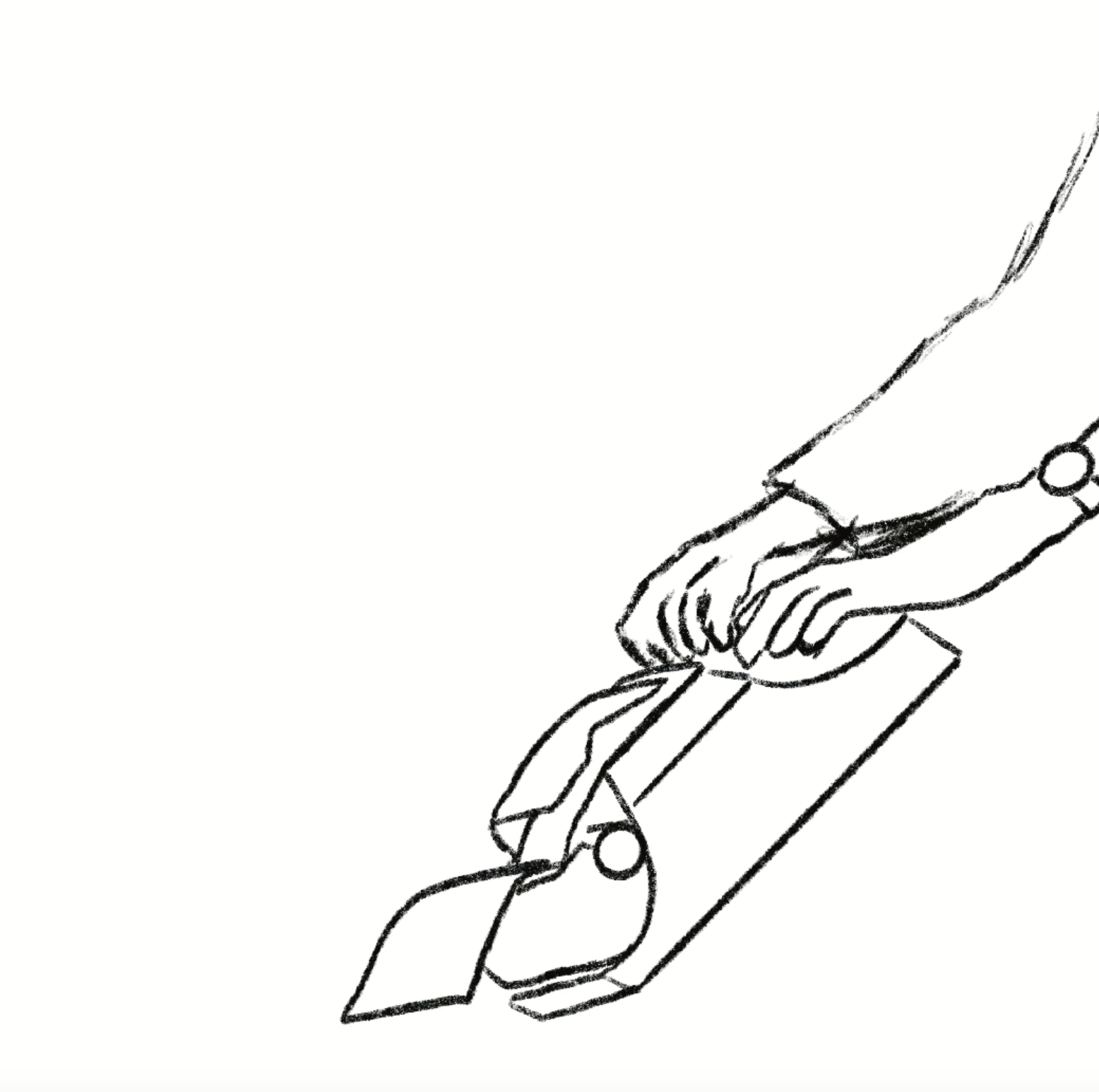
I am very fond of Sketch 2 (the cat’s cradle with the mushroom cloud inside) and the poem Labels. Labels was inspired by a lunch I had last year with a hibakusha, Yoshiko Kajimoto. She was 14 when the bomb fell and she spoke of the following days in vivid detail. I believe it was her testimony in particular that started me on this path towards researching the societal implications of nuclear weapons.
I drew an artistic interpretation of a cat’s cradle seeking to capture a mushroom cloud to communicate the concept of hyperobjects. According to Timothy Morton, a hyperobject is a real event or phenomenon so vast that it is beyond human comprehension. Nuclear weapons are an example of a hyperobject – its existence and use has had devastating ramifications touching different aspects of life that may be hard to fully comprehend all at once.
Nuclear weapons are both deeply present and hidden. On one hand, nuclear weapons are a constant security threat and have left deep scars on cities and bodies ranging from people in Japan to Utah downwinders. On the other hand, some of the information around them is clouded in mystery, and censored by different governments. Nuclear and fallout shelters built for nuclear warfare are considered to be Cold War relics; in the United States, they are largely abandoned or hidden, tucked in the basements of homes and schools, or located far out in the countryside away from cities. Some nuclear bunkers are parking lots in New York City and rumored rooms in DC. Secrecy and hidden locality are reasons why there isn’t as much widespread public knowledge or understanding of nuclear weapons.

Why is nuclear weapon risk a conversation we’re still having today? Where can people new to this issue learn more?
As a young person, I encounter many people my age who ask me why I care about nuclear weapons and why they matter in this day and age. It is, in a sense, meaningless to them. The violence of the bomb cannot be completely understood without hearing about the pain it wrought on people who experienced it firsthand. From burning skin and bodies to radiation poisoning, nuclear weapons have left permanent physical and psychological scars that are rarely spoken about, but have affected generations of families and communities.
I suggest reading more about what happened to individual A-bomb survivors to truly understand the effects of nuclear weapons. Humanizing those affected by war combats the practice of minimizing lives and experience to death counts. Great works to look at include Barefoot Gen (a manga on the Hiroshima bombings inspired by the hibakusha author’s experience), Grave of the Fireflies (a film about children grappling with the effects of the bombing), and the poem Bringing Forth New Life (生ましめんかな) by hibakusha poet Sadako Kurihara (which is about a woman giving birth in the ruins while the midwife dies from injuries in the middle of the process).
I knew the design from the beginning. It had to be a cat’s cradle because Vonnegut equates scientific irreverence to the bomb’s humanitarian effects to a cat’s cradle (an essentially useless game of moving strings with your fingers). The poem centers around hyperobjects, a term I grappled with in a university seminar with Dr. Brite from Purdue’s Honors College. I had never heard of the term before that class but I thought it was fitting for something like nuclear weapons. My research is interdisciplinary in nature and it seeks to analyze the cultural aspects of nuclear weapons that aren’t traditionally used by the political science community.
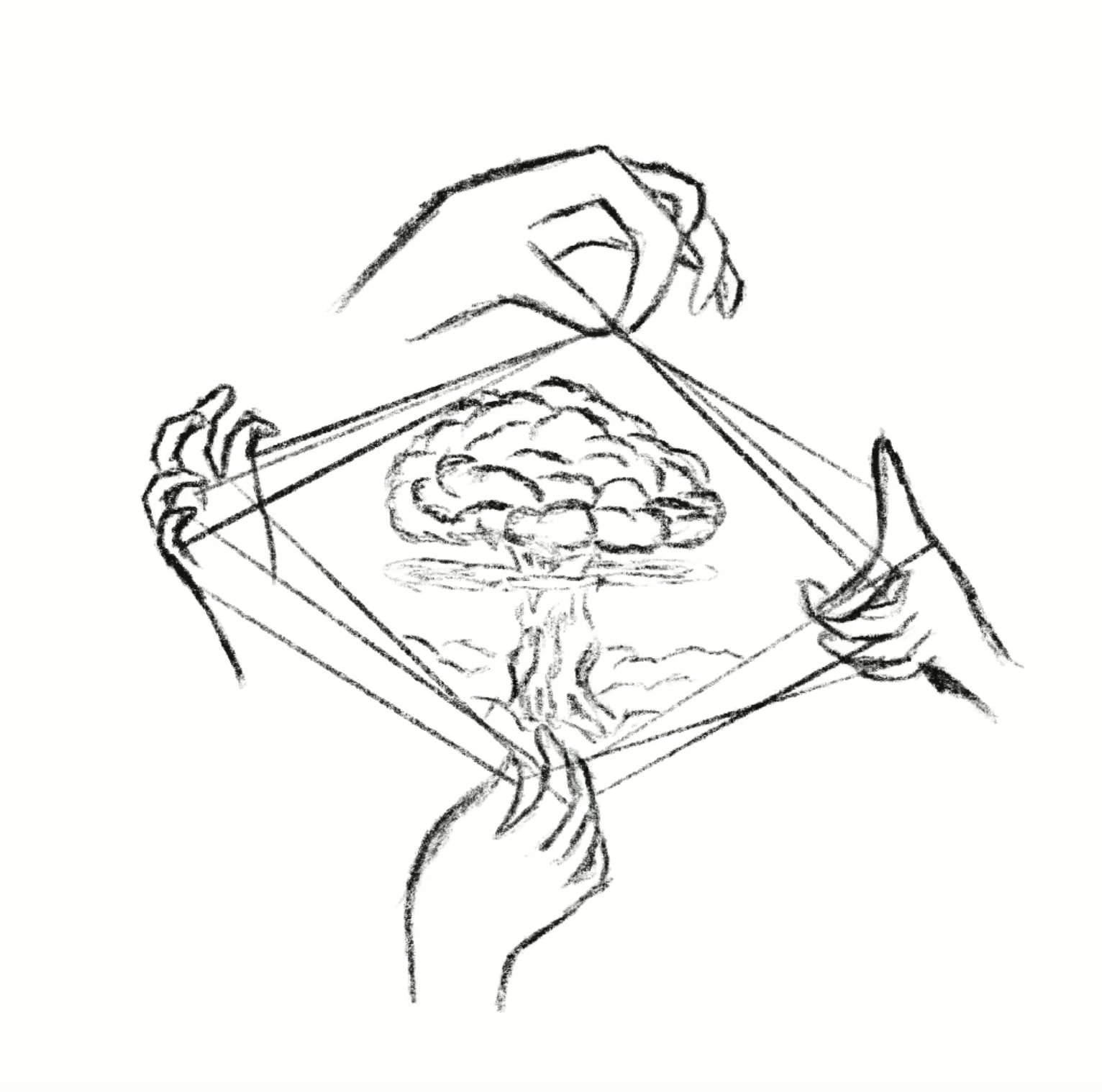
The third piece I’ll discuss is Sketch 5 and Rebuilding. This sketch of a rose is reminiscent of the Duftwolke roses sent from Germany to Hiroshima after the war as a symbol of rebuilding. It is also symbolic of Vonnegut’s experiences in World War II. He was caught in the firestorm that engulfed Dresden and he sheltered in a slaughterhouse. As one of the remaining survivors, he was forced to burn dead bodies in the aftermath. Vonnegut became an anti-war activist as a result of this experience. He also wrote Slaughterhouse-Five a book that grapples with trauma and PTSD after war. His writing was his way of finding closure and rebuilding, hence the title of the poem.
I wanted to end this collection on an optimistic note because, as dark and grim as war and nuclear weapons can be, there is great resilience in humanity. It takes monumental courage and hope to rebuild a city or mind or soul after facing the devastation of an all-consuming weapon.
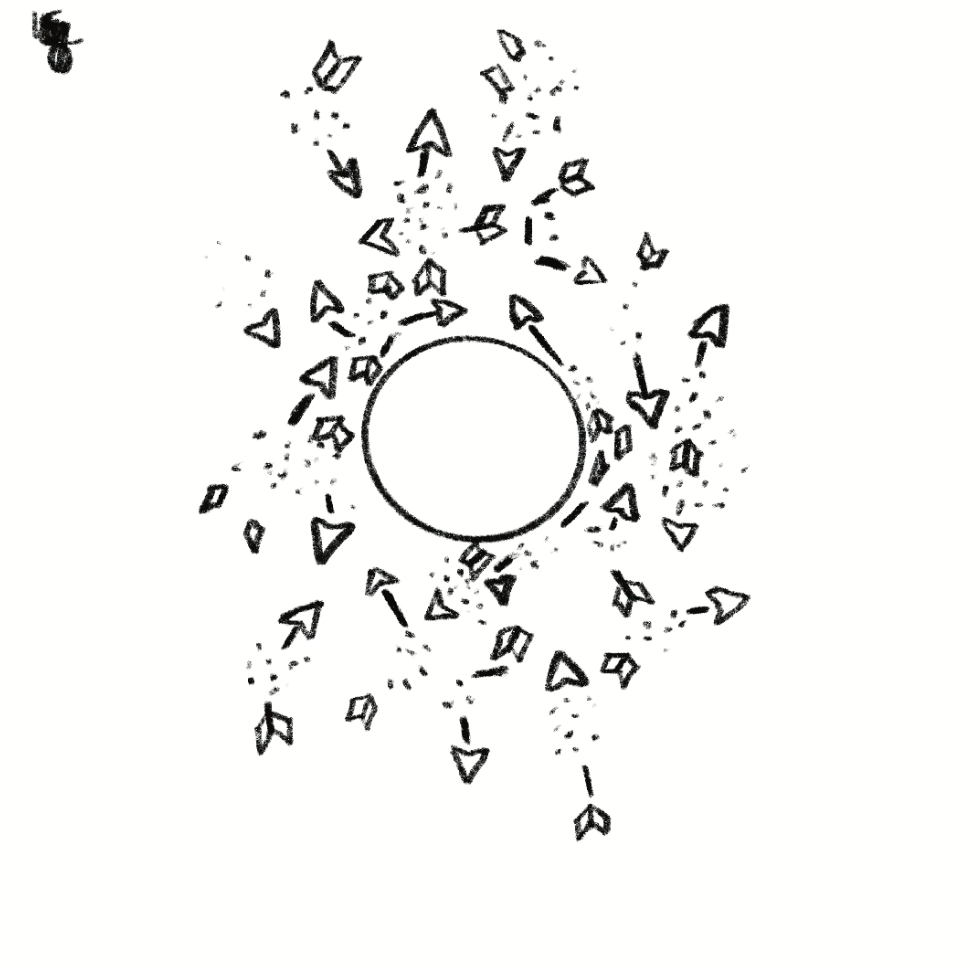
I actually drew this while talking with FAS fellows and FAS advisors. I often draw to pay attention to important conversations (so all of my notebooks are filled with drawings). I thought the deep, complex observations about nuclear weapons and ethics and misinformation and other fields was so fascinating and I think as a result, I created my favorite drawing. I felt very hopeful during the conversation, because I saw so many people who were invested in this topic and were actively researching and discussing the implication of nuclear weapons.
Where can people see your show/contact you?
The showcase can be seen at the Kurt Vonnegut Museum and Library in Indianapolis, Indiana. If someone wants to speak about this topic with me, they can reach me at X or Instagram at @cmyeungg.
